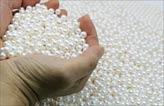View
A hands-on approach in America
Updated: 2011-05-29 08:00
(New York Times)

In 1961, Chevrolet sponsored a 30-minute movie trailer that heralded the country's creative ingenuity and technical know-how. "Of all things Americans are, we are makers," its narrator intoned, over video of boys building a sand castle.
"With our strengths and our minds and spirit, we gather, we form and we fashion: makers and shapers and putit- togetherers. We start young ��"
One of the lessons many economists took away from the financial meltdown in 2008 was that America had abandoned its roots as a manufacturing powerhouse for the esoteric, and questionable, benefits of financial pyrotechnics.
Ayah Bdeir, 28, had a front row seat for the show, she told The Times Magazine. She was a financial-software consultant, working at a plush office in Midtown Manhattan and selling software for credit-default swaps, one of the complex instruments that helped ruin the global economy. She was making a lot of money, and she was miserable.
Ms. Bdeir quit. She wanted to make things, and, over the strenuous objection of her mother and several friends, to become a new-age manufacturer. Partly it was to wash away the shame she felt.
"I felt guilty for a while," she told The Times. "I have three degrees; I speak three languages; I pride myself on my scientific and mathematical thinking - how could I not have understood the social, economic and political dimensions of something that I was working on that ended up ruining the world?"
With a colleague, Ms. Bdeir came up with the idea of making electronics components into Lego-like bricks, filled with circuits, sensors, solar panels and motors that can be snapped together to create basic machines - for instance, a battery connected to a bulb and a pressure sensor that can illuminate or dim it. She has made the brick project a business, selling $99 kits, called littleBits, for people to make their own crude gadgets.
Programs teaching children as young as 5 how to use power tools and build things like sailboats, treehouses and log cabins have sprung up around the country. Some parents seem to realize that the ability to swing a hammer is as important as tapping on an iPhone.
"There is an awakening going on, for sure," Doug Stowe, 62, a longtime woodworker and educator in Arkansas, told The Times. "Up until the early 1900s, there was a widespread understanding that the use of the hands was essential to the development of character and intellect. More recently, we've had this idea that every child should go to college and that the preparation for careers in manual arts was no longer required."
There are signs of a renaissance taking place on a larger scale as well.
The Boston Consulting Group says companies like the construction equipment giant Caterpillar that once shifted production abroad are now moving it back. At the same time, companies from other countries, especially European ones, are moving production to America, Paul Krugman wrote recently in The Times. He cautioned that the manufacturing rebound was not robust, but automakers like GM and Ford had weathered the storm and were again growing.
"So while we still have a deeply troubled economy," he wrote, "one piece of good news is that Americans are, once again, starting to actually make things."
Once again, America may become a nation of put-it-togetherers.
Tom Brady
Specials

Room at the inn
The Chinese hotel industry experiences a building boom, prompting fears of oversupply.

Pearls of wisdom
Chinese pearl farmers dominate the world market but now want to work smarter, not harder

Truly a super woman
Li Yuchun first came to prominence in 2005 as the Super Girl winner, and since then has become an international star.